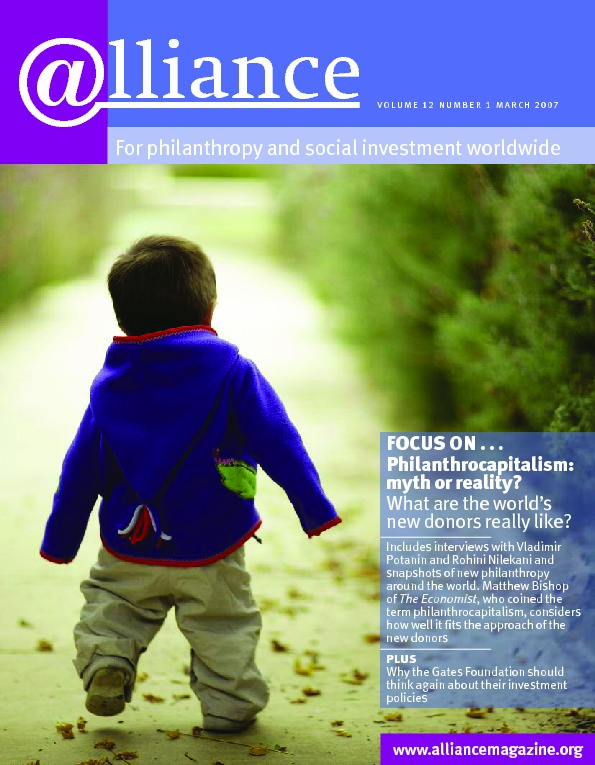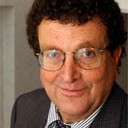‘Where is the money for women’s rights?’ This is a question that brought together over 300 women’s rights organizers in Queretaro, Mexico, 9-11 November 2006, at the invitation of the Association for Women’s Rights and Development (AWID). The conversations in Queretaro were carried forward to a Funders Dialogue organized during the African Feminist Forum hosted by the African Women’s Development Fund in Accra, Ghana, 15-19 November.
In 2005, as reported in the March 2006 issue of Alliance, AWID launched a research project called ‘Where is the money for women’s rights?’ The project objectives were to identify key trends in funding for women’s rights work over the past ten years, looking at the quantity of funding available, regional focus, thematic areas and programmatic approaches. AWID wanted to understand what changes had occurred and why, and to analyse the impact of these funding trends on women’s organizations and movements. The research paid close attention to funding patterns from different sectors such as bilateral donor agencies, large private foundations, international NGOs, women’s funds and individual donors.
The project methodology included interviews with a wide range of funders and representatives of women’s organizations from different regions, an online survey of over 400 groups, a literature review of existing research, and several international consultations which brought together women’s movements and funders over an 18-month period. AWID produced the first report on this project in October 2005 during the AWID International Forum in Bangkok, and an updated report in time for the Queretaro conference in November 2006. The key findings of the research were as follows:
• Funding for women’s rights work is not as readily available as it was ten years ago – it is either static or declining.
• It is now assumed by many funders that ‘gender’ or ‘women’s rights’ work has ‘gone out of fashion’. Patriarchal norms and values are still embedded in decision-making around financial resources.
• Women’s organizations are increasingly seen as being redundant, and ‘gender mainstreaming’ has taken the political steam out of women’s rights work.
• Increased security concerns and particularly the war against terrorism have diverted resources away from addressing the root causes of inequality and poverty.
• Many women’s organizations lack the capacity to go after significant and sustainable funding.
From Queretaro…
The Queretaro conference reflected on these findings, and the implications for financing the unfinished business of promoting and protecting women’s rights work across the world, particularly within the context of movement building. One of the key questions at the conference was ‘What do we need to do as women’s movements (and not just individual organizations) to leverage more money for women’s rights?’
The consensus from a diverse range of participants across the global women’s movement, as well as contributions from influential allies in donor agencies, was that funding for women’s rights work is falling off the agenda and is not being given the serious consideration that half the world’s population deserves. To rectify this, the donor community has to demonstrate that it takes women seriously, and that it matches rhetoric and promises with action. There has to be an increase in resources available for women’s rights, and significant investments in capacity-building to sustain the considerable gains that have been made.
Funders were urged to work more closely with women’s movements to develop flexible funding strategies that meet the various needs of the movement such as core support, long-term funding, advocacy, peer learning, and measuring results. Within the movement itself, it was felt that women’s movements should set their own agendas, linked to their own values and mission, and not be subjected to the whims of fly-by-night grantmakers. It was also agreed that new and innovative partnerships are needed with a wide range of funders from all sectors, and a lot more needs to go into measuring impact and telling stories that reflect the significance and impact of funded work in communities.
There was also unanimous acceptance of the need for the movement to sustain itself. As one of the most powerful social movements in the world, it is still a mystery why individual giving by women is not going into the women’s movement. Yet women, according to AWID’s findings, constitute well over 60 per cent of individual donors to other social movements.
… to Accra
The African Feminist Forum in Accra, which took place a week after the Queretaro meeting, was attended by 130 feminist activists, thinkers, scholars and practitioners from across Africa. Some of the participants at the African Feminist Forum had also been at the Queretaro meeting the week before. One of the activities during the four-day forum was a Funders Dialogue, which was made up of representatives of women’s funds, bilaterals and private foundations funding women’s rights work in Africa. Participants at the Feminist Forum were all invited in a personal capacity, so the speakers at the Funders Dialogue shared mostly their own perspectives with occasional references to institutional positions.
During the Funders Dialogue at the African Feminist Forum, an additional question was ‘Where should the funding for women’s rights go’? Participants felt it should go into significant investments in the infrastructure and architecture of the women’s movement in the Africa region, as opposed to funding strategies that focus only on individual organizations and projects. It was pointed out that there are several opportunities now for women to change agendas and push for transformatory processes, but without financial, material and technical support the opportunities will slip away. Examples of such opportunities include the 2004 Protocol on Women’s Rights in Africa, the Solemn Declaration on Gender by the African Union, and women in senior leadership positions, including the first democratically elected female president in Africa. An interesting finding, which was highlighted in Queretaro and carried forward to the dialogue in Accra, was the growing importance of women’s funds.
Women’s funds are cited in the AWID research as the third most important source of revenue for women’s rights work, after bilaterals and public foundations, and they have the widest spread, compared with other funders. They are now regarded as the ‘fundraising wing’ of the global women’s movement. Although women’s funds have experienced steady growth over the years, it was agreed at both meetings that much more needs to be done. Most of the women’s funds, particularly those located in the Global South, have limited grantmaking capacity. One area in which large donors can make a meaningful contribution to funding for women is investments in women’s funds.
Participants and speakers at these two exciting meetings might not have been able to say ‘where the money is’ but they definitely knew exactly what the money was needed for.
For further information
http://www.awid.org
http://www.awdf.org
Bisi Adeleye-Fayemi is Executive Director of AWDF, an Africa-wide women’s fund based in Ghana. She was Honorary President of AWID 2004-06. Email Bisi@awdf.org






Comments (0)